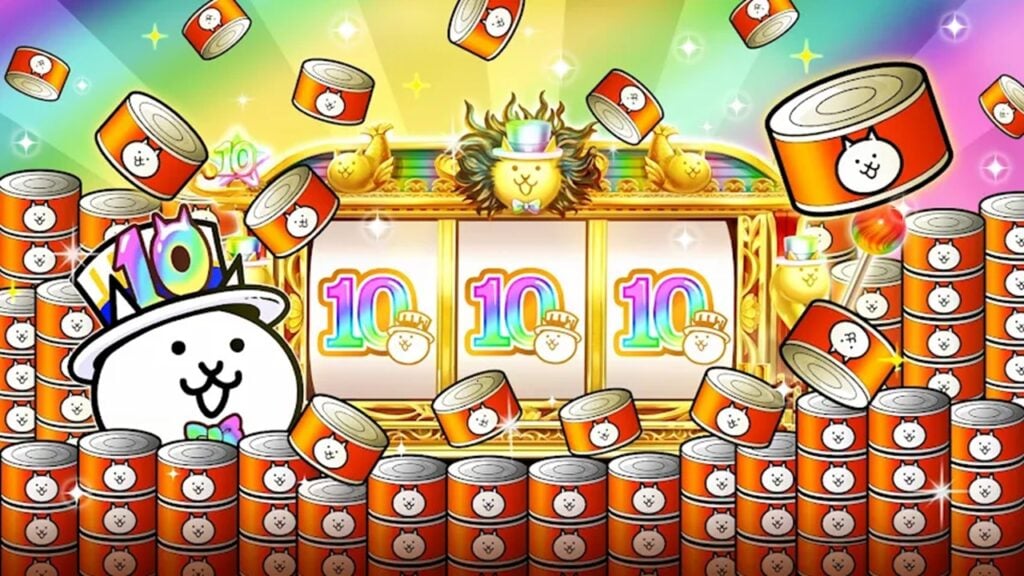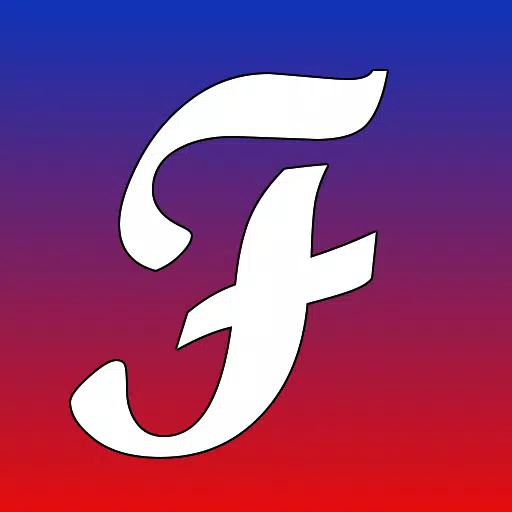Monster Hunter Arsenal: From Primitive Axes to Ultimate Blades
 Monster Hunter's renowned for its diverse weapon roster and captivating gameplay. But did you know even more weapons exist, absent from recent titles? This exploration delves into the history of Monster Hunter weaponry.
Monster Hunter's renowned for its diverse weapon roster and captivating gameplay. But did you know even more weapons exist, absent from recent titles? This exploration delves into the history of Monster Hunter weaponry.
← Return to Monster Hunter Wilds' main article
A Look Back at Monster Hunter Weaponry
 Monster Hunter boasts a rich history, spanning over two decades since its 2004 debut. A key element is its varied weapon selection. Monster Hunter Wilds offers fourteen distinct weapon types, each with unique strengths, weaknesses, move sets, and mechanics to master.
Monster Hunter boasts a rich history, spanning over two decades since its 2004 debut. A key element is its varied weapon selection. Monster Hunter Wilds offers fourteen distinct weapon types, each with unique strengths, weaknesses, move sets, and mechanics to master.
Significant evolution is evident across weapon iterations, exemplified by the Great Sword's transformation. Furthermore, older weapons, previously unreleased in the West, add to the franchise's legacy. Let's examine Monster Hunter's weapon history.
First Generation
 These weapons debuted in the original Monster Hunter and its variations. These foundational weapons have endured, evolving with refined move sets and mechanics.
These weapons debuted in the original Monster Hunter and its variations. These foundational weapons have endured, evolving with refined move sets and mechanics.
Great Sword
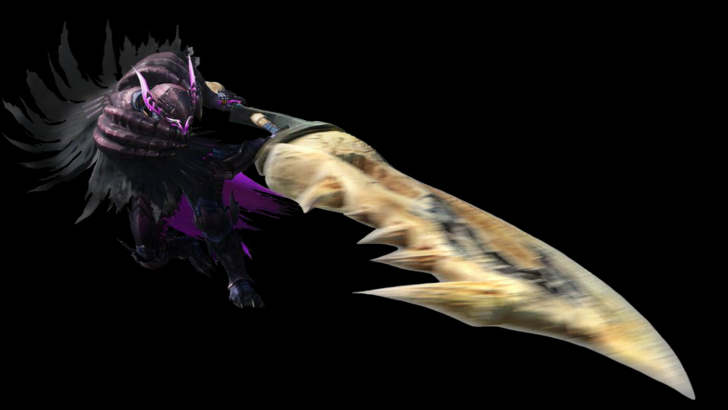 Arguably the franchise's most iconic weapon, the Great Sword's presence dates back to 2004. Known for its immense power, its high damage comes at the cost of slow attack and movement speeds. It can function as a shield, consuming stamina and sharpness.
Arguably the franchise's most iconic weapon, the Great Sword's presence dates back to 2004. Known for its immense power, its high damage comes at the cost of slow attack and movement speeds. It can function as a shield, consuming stamina and sharpness.
Initially, gameplay revolved around hit-and-run tactics and precise spacing. While combos were possible, slow animations hindered their effectiveness. A unique element was the damage variation based on impact location – the blade's center inflicted maximum damage.
Monster Hunter 2 introduced the iconic Charged Slash, a multi-level charge attack culminating in a devastating swing. This remains a defining feature.
Subsequent games refined the charging mechanic, adding finishers and more efficient combo execution, despite maintaining its inherent slowness. Monster Hunter World introduced a shoulder tackle, allowing for quicker charged attacks.
The Great Sword offers a low skill floor but high skill ceiling. Mastering it requires maximizing damage output through precise timing of True Charged Slashes.
Sword and Shield
 Embodying versatility, the Sword and Shield provides a balanced approach. Lower single-hit damage is compensated by rapid combos, blocking capabilities, mobility, and utility. Initially considered a beginner weapon, its complexity increased with added mechanics and attacks.
Embodying versatility, the Sword and Shield provides a balanced approach. Lower single-hit damage is compensated by rapid combos, blocking capabilities, mobility, and utility. Initially considered a beginner weapon, its complexity increased with added mechanics and attacks.
Early gameplay focused on quick slashes and high mobility. Monster Hunter 2 enabled item use while the weapon remained drawn.
Later iterations expanded the moveset, including shield bash combos (Monster Hunter 3), backstep and jumping attacks (Monster Hunter 4), and Perfect Rush combos and aerial finishers (Monster Hunter World and Monster Hunter Rise).
Despite its short range and moderate damage, the Sword and Shield remains a jack-of-all-trades, boasting infinite combos, quick attacks, evasiveness, powerful finishers, and a reliable block. Its simplicity often overshadows its depth.
Hammer
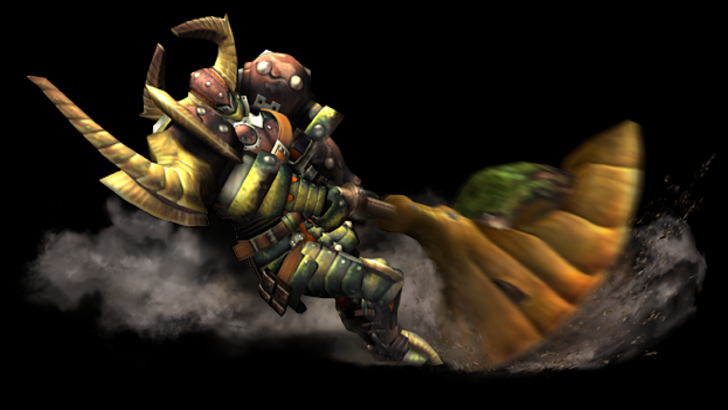 One of two blunt weapons (incapable of tail cutting), Hammers excel at breaking parts, particularly heads. Post-Monster Hunter 2, they became renowned for stunning monsters through repeated head strikes.
One of two blunt weapons (incapable of tail cutting), Hammers excel at breaking parts, particularly heads. Post-Monster Hunter 2, they became renowned for stunning monsters through repeated head strikes.
Gameplay resembled the Great Sword's hit-and-run style, but with surprisingly high mobility and no blocking capability. Its unique charge mechanic allowed movement during charging.
The moveset remained largely consistent until Monster Hunter World and Monster Hunter Rise, introducing the Big Bang and Spinning Bludgeon attacks, significantly enhancing its offensive capabilities.
Two modes, Strength and Courage, were added, altering charge attacks and effects. Effective Hammer use necessitates mode switching based on monster matchups and maintaining charge while moving.
The Hammer's objective is straightforward: target the head and stun. This requires skill and precision to maximize damage output.
Lance
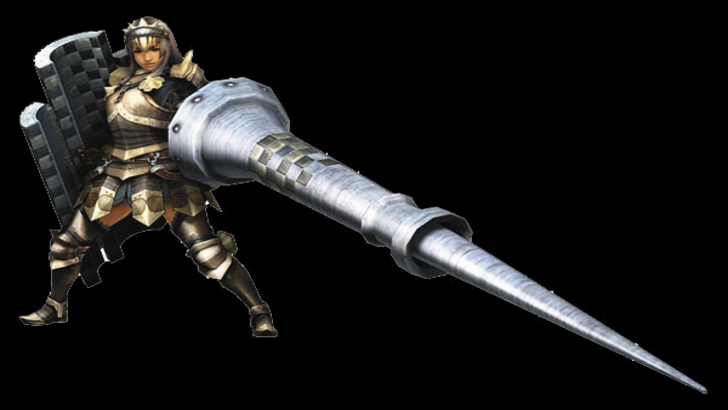 The Lance epitomizes the adage "a good offense is a great defense." Its long reach allows for ranged attacks, while its large shield provides exceptional defense, blocking most attacks, even those normally un-guardable with proper skill setup. Mobility is limited while drawn, but damage output is considerable.
The Lance epitomizes the adage "a good offense is a great defense." Its long reach allows for ranged attacks, while its large shield provides exceptional defense, blocking most attacks, even those normally un-guardable with proper skill setup. Mobility is limited while drawn, but damage output is considerable.
Gameplay resembles an outboxer's strategy: poking from a safe distance. Core attacks include forward and upward thrusts (chainable up to three times). A counter mechanic was added, enhancing its defensive capabilities. Running charge and shield bash attacks facilitate gap closing.
Often underestimated due to its unflashy animations, the Lance rewards players for standing their ground. It transforms the hunter into a tank, surpassing even the Gunlance in defensive capabilities.
Light Bowgun
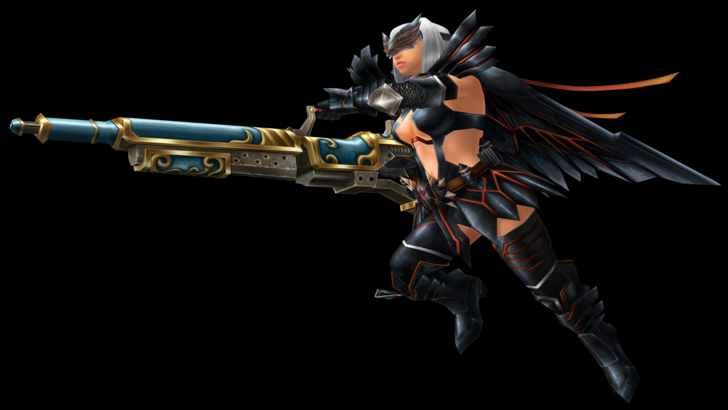 A ranged weapon present since the first generation, the Light Bowgun prioritizes mobility and speed. Its smaller size allows for faster reloading, sheathing, and dodging.
A ranged weapon present since the first generation, the Light Bowgun prioritizes mobility and speed. Its smaller size allows for faster reloading, sheathing, and dodging.
The trade-off for mobility is reduced firepower compared to its heavier counterpart, with limited ammunition options. Customization options include long barrels, silencers, and scopes.
Its rapid-fire capability for certain ammo types compensates for its limitations, making it a highly effective and easy-to-use ranged weapon.
Monster Hunter 4 introduced "Critical Distance," adding depth to ranged combat. Monster Hunter World introduced Wyvernblast (planting detonating bombs) and a slide maneuver, further enhancing its run-and-gun style.
Despite its simplicity, the Light Bowgun has evolved beyond being a weaker variant, offering a robust and user-friendly experience without sacrificing mechanics or specialty.
Heavy Bowgun
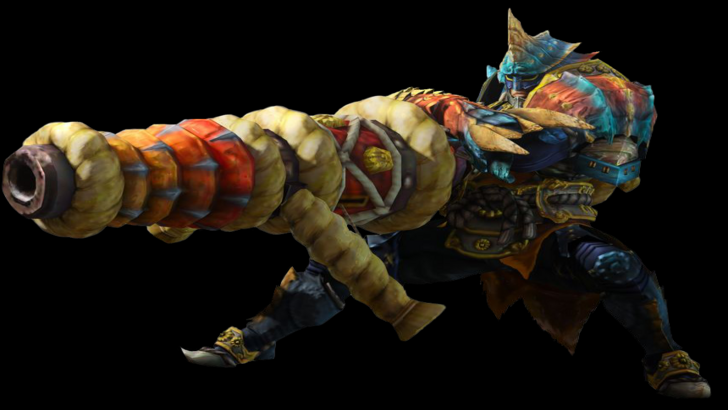 The Heavy Bowgun is the premier ranged weapon of the first generation, delivering high damage and access to specialized ammunition. Its size and weight, however, limit mobility.
The Heavy Bowgun is the premier ranged weapon of the first generation, delivering high damage and access to specialized ammunition. Its size and weight, however, limit mobility.
While the Light Bowgun offers mobility, the Heavy Bowgun provides versatility in ammunition types. Its slow movement speed (walking only while drawn) is offset by the ability to equip a shield for defense.
Its design remained largely unchanged, serving as a powerful artillery or support weapon. Low mobility can lead to downtime if targeted by monsters.
Monster Hunter 3 introduced Siege Mode, allowing for continuous firing without reloading. Monster Hunter World introduced Wyvernheart (minigun-like) and Wyvernsnipe (high-damage single shot) special ammo, requiring no ammunition from the player's inventory.
The Heavy Bowgun's strength lies in powerful ammunition like Cluster and Crag, enabling efficient monster takedowns. While minor changes have occurred, its core identity—high-powered weaponry—remains intact.
Dual Blades
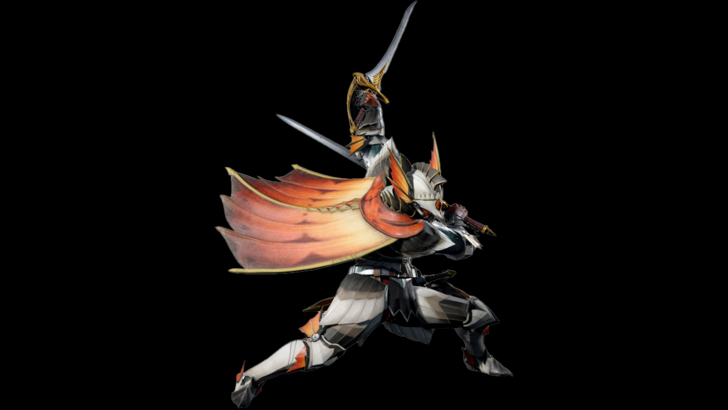 Known for their flashy attacks, Dual Blades prioritize speed and are highly effective at inflicting status ailments and elemental damage due to their multi-hit attacks. Interestingly, despite being a first-generation weapon, they were only introduced in Western releases.
Known for their flashy attacks, Dual Blades prioritize speed and are highly effective at inflicting status ailments and elemental damage due to their multi-hit attacks. Interestingly, despite being a first-generation weapon, they were only introduced in Western releases.
Focusing on speed and fluid combos, they surpass the Sword and Shield in pure offense. Individual attacks are weak, but rapid attacks accumulate significant damage.
Demon Mode increases damage and access to additional attacks, but consumes stamina. Monster Hunter Portable 3rd and Monster Hunter 3 Ultimate introduced the Demon Gauge, filling with each attack in Demon Mode, allowing access to Archdemon Mode – a powered-up state with increased attacks and evasiveness without stamina drain.
Key changes include new attacks in powered-up states and the Demon Dash – a unique movement tool. Monster Hunter Generations Ultimate's Adept Hunter Style linked perfect dodges to Demon Dash, granting damage buffs and enhanced movement.
While core gameplay remains consistent, nuances were adjusted to enhance its offensive capabilities. Archdemon Mode significantly altered gameplay, encouraging sustained use over short bursts.
Second Generation
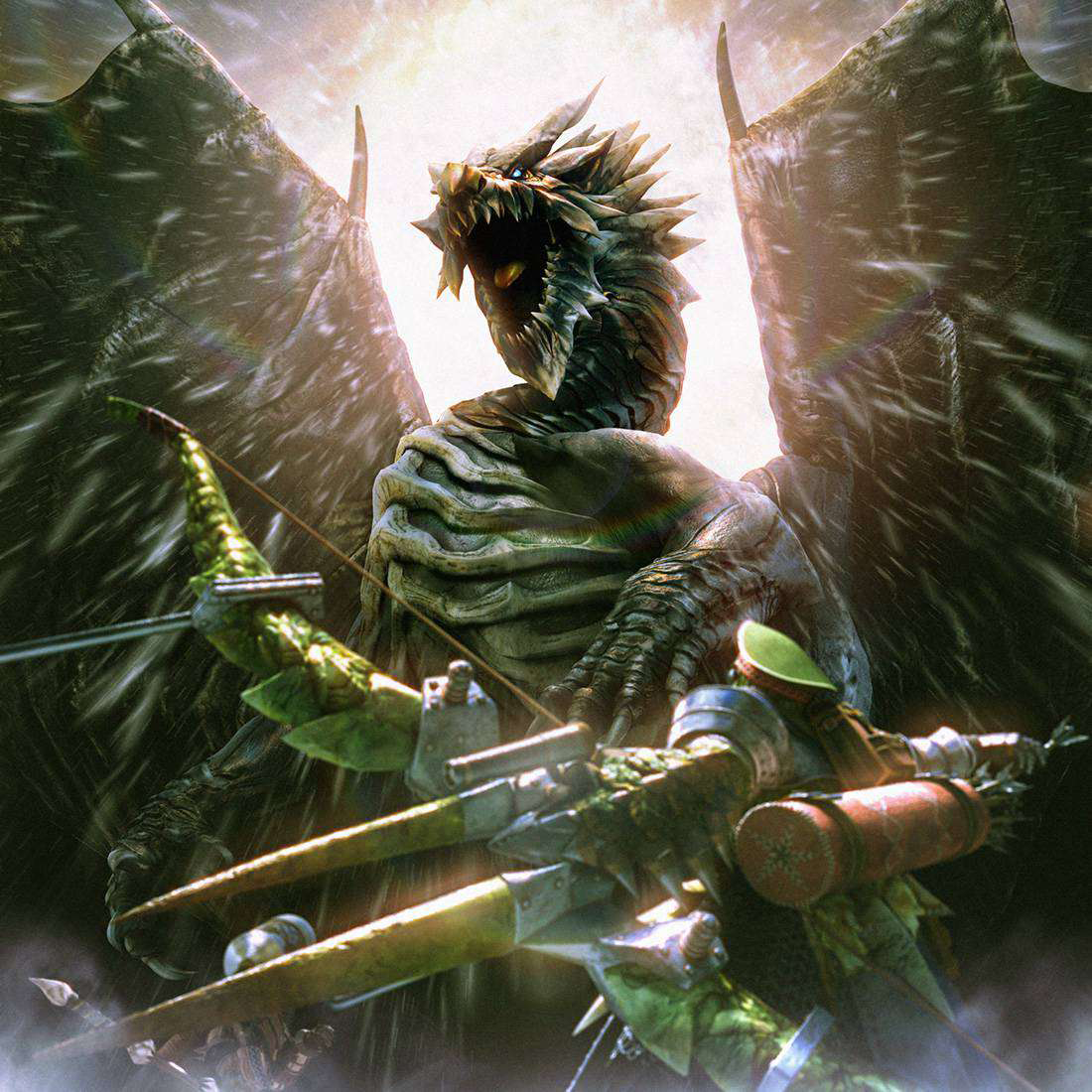 Introduced in the second generation, these weapons are considered cousins to their first-generation counterparts, sharing functional similarities but distinct move sets and mechanics.
Introduced in the second generation, these weapons are considered cousins to their first-generation counterparts, sharing functional similarities but distinct move sets and mechanics.
Long Sword
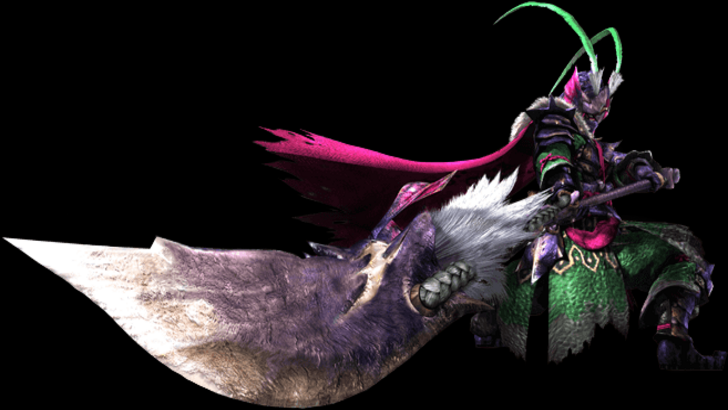 The Long Sword is known for its fluid combos, high damage, and mechanics. Cosmetically similar to katanas among first-generation Great Swords, it was officially introduced in Monster Hunter 2. While functioning similarly to the Great Sword (high damage, slashing), it boasts superior mobility and more fluid combos, lacking the blocking ability.
The Long Sword is known for its fluid combos, high damage, and mechanics. Cosmetically similar to katanas among first-generation Great Swords, it was officially introduced in Monster Hunter 2. While functioning similarly to the Great Sword (high damage, slashing), it boasts superior mobility and more fluid combos, lacking the blocking ability.
The Spirit Gauge, filled by landing attacks, activates the Spirit Combo, a high-damage attack string.
Monster Hunter 3 added Spirit Roundslash, a finisher increasing Spirit Gauge levels (white, yellow, red), each granting stronger attack buffs.
Monster Hunter World added a new finisher and a parry attack (Foresight Slash), usable with or without a Spirit Gauge, providing invulnerability. This enhanced combo flow.
Iceborne introduced Iai Stance, with Iai Slash and Iai Spirit Slash, providing faster Spirit Gauge filling and additional parry attacks.
The Long Sword's combo-oriented design evolved into a counter-based approach, integrating parries and counters to maximize efficiency.
Hunting Horn
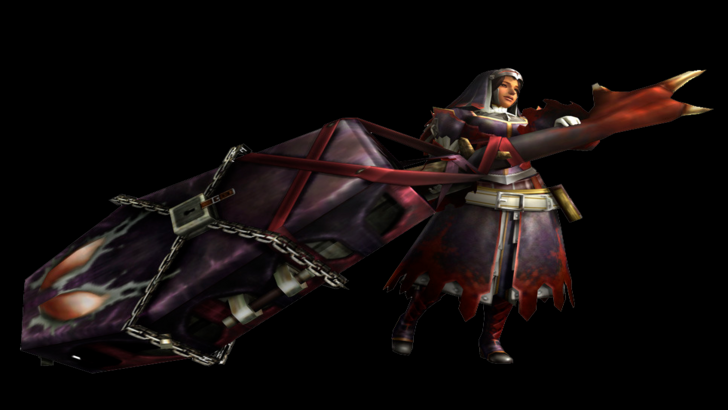 A support weapon, the Hunting Horn is a blunt weapon (impact damage only) introduced in Monster Hunter 2. Its Recital mechanic uses three colored notes to create various beneficial effects (attack/defense buffs, healing).
A support weapon, the Hunting Horn is a blunt weapon (impact damage only) introduced in Monster Hunter 2. Its Recital mechanic uses three colored notes to create various beneficial effects (attack/defense buffs, healing).
Similar to Hammers, it targets the head to stun, but with lower damage due to its support capabilities.
Changes focused on Recital, culminating in Monster Hunter Rise's overhaul. Monster Hunter 3 Ultimate allowed note playing during attacks, improving fluidity. Monster Hunter World allowed song queuing, streamlining buff activation. Iceborne introduced Echo Notes, providing additional buffs.
Monster Hunter Rise simplified Recital, making it easier to use, but sacrificing complexity. This change was divisive, with some praising its accessibility while others lamented the loss of intricacy.
Gunlance
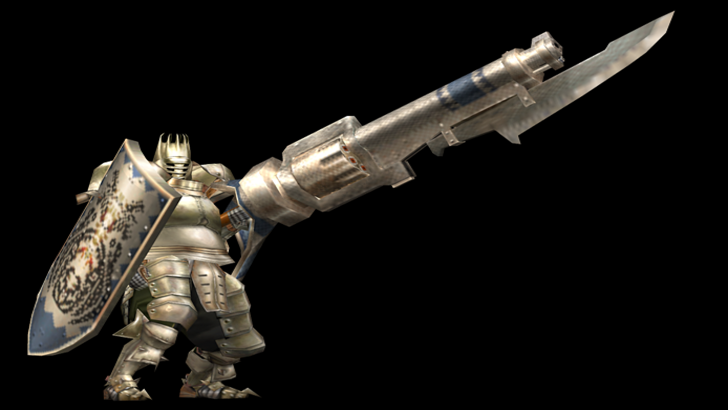 A hybrid of Lance and Bowgun, introduced in the second generation, the Gunlance combines a large shield and piercing lance with explosive rounds (unlimited ammunition, replenished upon reloading).
A hybrid of Lance and Bowgun, introduced in the second generation, the Gunlance combines a large shield and piercing lance with explosive rounds (unlimited ammunition, replenished upon reloading).
Attacks are slashing, unlike the Lance's piercing attacks. Wyvern's Fire is a charged explosive attack. Shelling abilities vary depending on the Gunlance, affecting explosive attacks.
Monster Hunter 3 enhanced its aggressive design with a quick reload mechanic, enabling infinite combos, a Full Burst attack, and additional shell charging.
Monster Hunter X introduced the Heat Gauge, increasing damage with shell use but risking overheating.
Monster Hunter World added Wyrmstake Shot, an impaling explosive finisher.
The Gunlance's unique reload and shelling mechanics differentiate it from other melee weapons. Balancing attack and shell usage is crucial to avoid overheating.
Bow
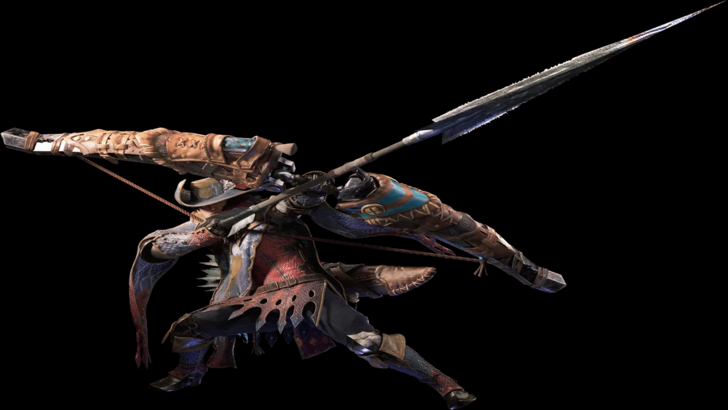 The most agile ranged weapon, the Bow excels in close-to-mid-range combat, utilizing mobility and combos. It functions similarly to a melee weapon, with chargeable attacks increasing arrow count.
The most agile ranged weapon, the Bow excels in close-to-mid-range combat, utilizing mobility and combos. It functions similarly to a melee weapon, with chargeable attacks increasing arrow count.
It employs a hit-and-run style, targeting weak points and utilizing multi-hit attacks for elemental damage. Coatings enhance damage or inflict elemental/status effects.
Mobility and fluid combos are key assets. Shot Types (removed for simplicity in newer games) were integrated into the base moveset in Monster Hunter World, resulting in a more combo-heavy approach. Monster Hunter Rise reintroduced Shot Types, tied to charge levels.
Monster Hunter World's overhaul created a more aggressive and combo-heavy ranged playstyle, distinct from Bowguns' point-and-shoot approach.
Third and Fourth Generation
 These weapons (Monster Hunter 3 and Monster Hunter 4, respectively) include the Insect Glaive's unique buff collection mechanic and transforming weapons with multiple modes.
These weapons (Monster Hunter 3 and Monster Hunter 4, respectively) include the Insect Glaive's unique buff collection mechanic and transforming weapons with multiple modes.
Switch Axe
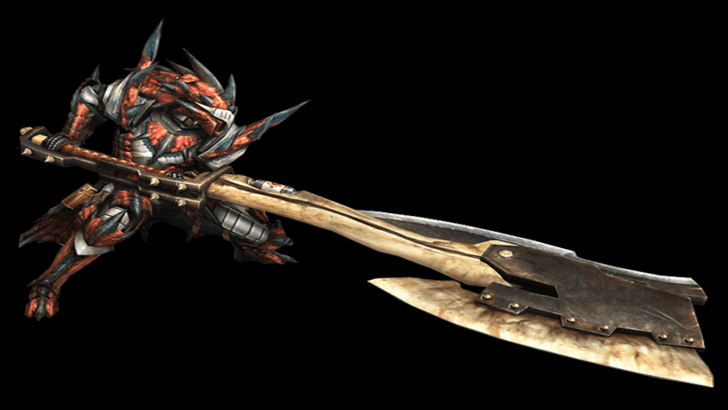 Introduced in Monster Hunter 3, the Switch Axe has Axe and Sword modes. Initially requiring a quest completion to unlock, it later became readily available.
Introduced in Monster Hunter 3, the Switch Axe has Axe and Sword modes. Initially requiring a quest completion to unlock, it later became readily available.
Gameplay balances both modes. Axe Mode offers range, mobility, and an infinite stamina-based combo. Sword Mode delivers higher damage, utilizing phials and the Elemental Discharge finisher.
While the core design remains consistent, morphing capabilities improved. Monster Hunter World introduced Amped, empowering Sword Mode with phials, adding new attacks and transitions. Monster Hunter Rise extended Amped to both modes, encouraging mode switching.
The Switch Axe's form-swapping gameplay and explosive combat style are unique.
Insect Glaive
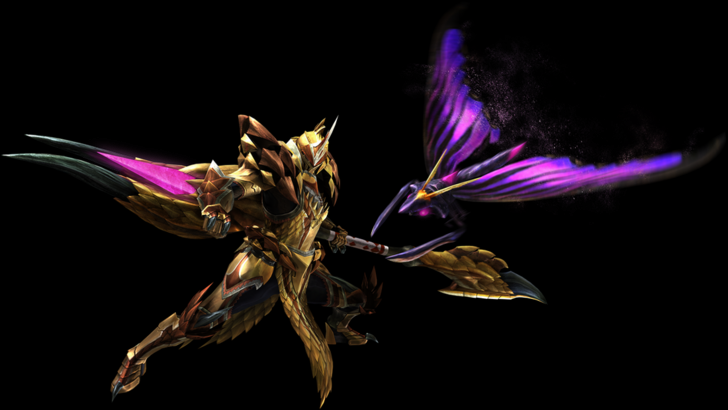 Introduced in Monster Hunter 4, the Insect Glaive specializes in aerial combat, using a Kinsect (controlled insect) to collect essences for buffs. It excels at mounting monsters.
Introduced in Monster Hunter 4, the Insect Glaive specializes in aerial combat, using a Kinsect (controlled insect) to collect essences for buffs. It excels at mounting monsters.
The base moveset is unremarkable, but collecting red, white, and orange essences grants attack, mobility, and defense buffs. Collecting all three enhances the buffs.
Substantial changes were minimal, aside from added attacks and finishers. Monster Hunter World: Iceborne added Descending Thrust. Monster Hunter Rise simplified Kinsect upgrades and introduced new Kinsect types.
Gameplay revolves around quick essence collection to maximize buff duration. The gold upgrade system was improved for efficiency.
The Insect Glaive's unique design and aerial capabilities set it apart.
Charge Blade
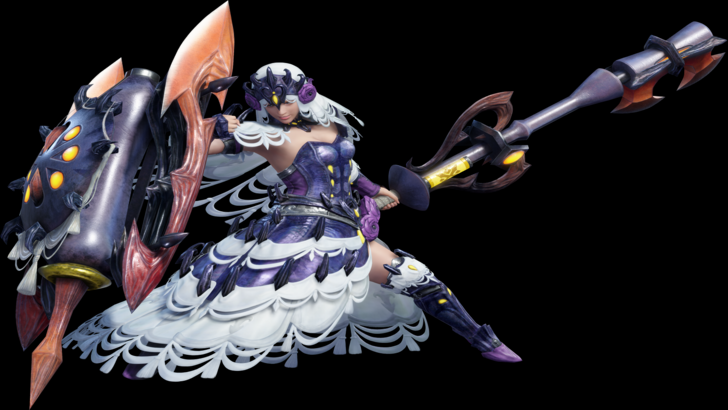 Another transforming weapon (Monster Hunter 4), the Charge Blade is known for its versatility and powerful finishers. Sword Mode charges phials, while Axe Mode unleashes Amped Elemental Discharge. It's considered one of the most difficult weapons.
Another transforming weapon (Monster Hunter 4), the Charge Blade is known for its versatility and powerful finishers. Sword Mode charges phials, while Axe Mode unleashes Amped Elemental Discharge. It's considered one of the most difficult weapons.
It utilizes Guard Points to charge phials efficiently. Phial types vary depending on the weapon. Fluid combos and versatility are offset by its complexity.
Mastering Guard Points is crucial for defense and offense. Understanding weapon transitions and monster behavior is essential for maximizing effectiveness.
The Charge Blade's balanced offense and mechanical depth make it a rewarding but challenging weapon to master.
Future Possibilities?
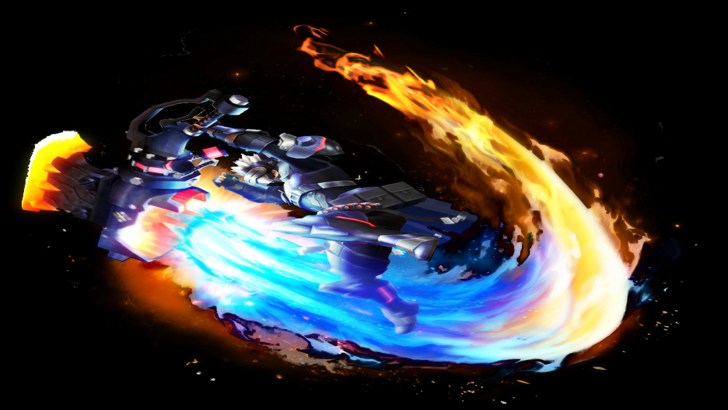 While Monster Hunter Wilds features fourteen weapons, more exist, previously unreleased in Western markets. Given the series' longevity, new weapons or ports of existing ones are likely. The addition of new weapons would further enhance the already engaging gameplay.
While Monster Hunter Wilds features fourteen weapons, more exist, previously unreleased in Western markets. Given the series' longevity, new weapons or ports of existing ones are likely. The addition of new weapons would further enhance the already engaging gameplay.
You may also like...
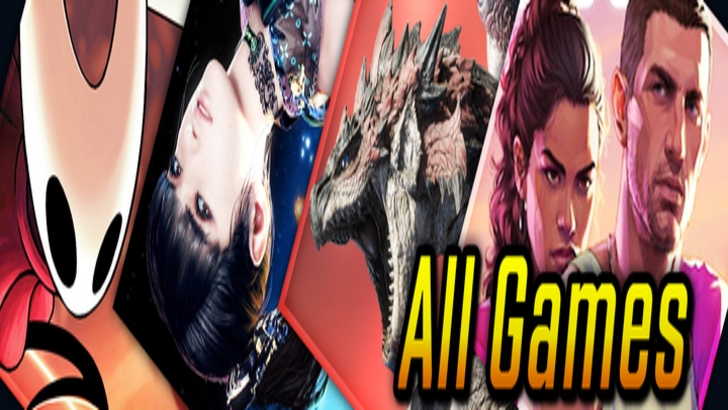
-
1

Every Pokémon Game on the Nintendo Switch in 2025
Feb 25,2025
-
2

How To Read Black Panther Lore: The Blood of Kings in Marvel Rivals
Mar 01,2025
-
3
![Anime Vanguards Tier List – Best Units For Each Gamemode [UPDATE 3.0]](https://images.gzztb.com/uploads/35/17376012656791b0f12fa1c.jpg)
Anime Vanguards Tier List – Best Units For Each Gamemode [UPDATE 3.0]
Feb 27,2025
-
4
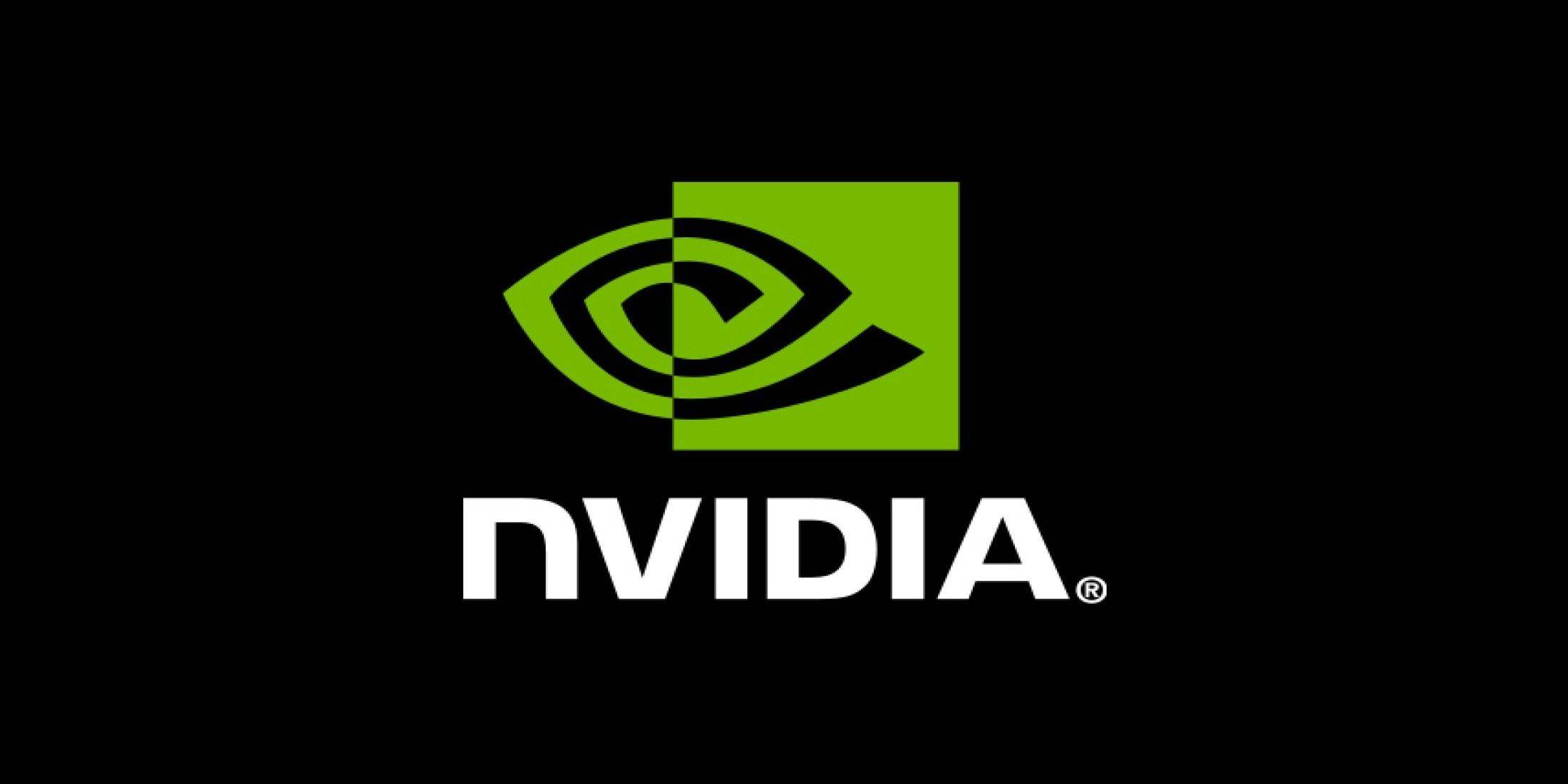
Nvidia RTX 5090 Specs Leak: Rumor Confirmed?
Mar 14,2025
-
5
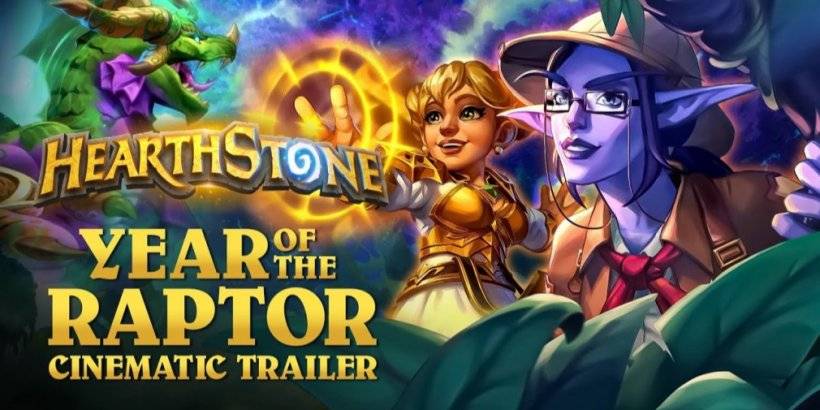
Hearthstone has kicked off the Year of the Raptor with a myriad of new content
Mar 16,2025
-
6
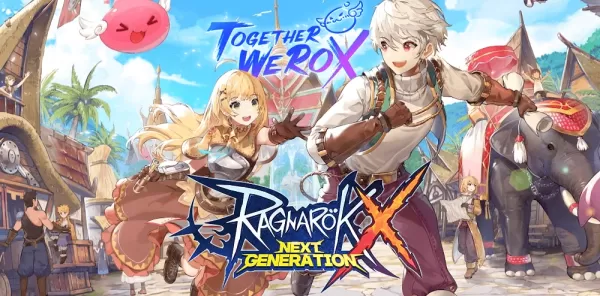
Ragnarok X: Next Gen - Complete Enchantment Guide
May 25,2025
-
7
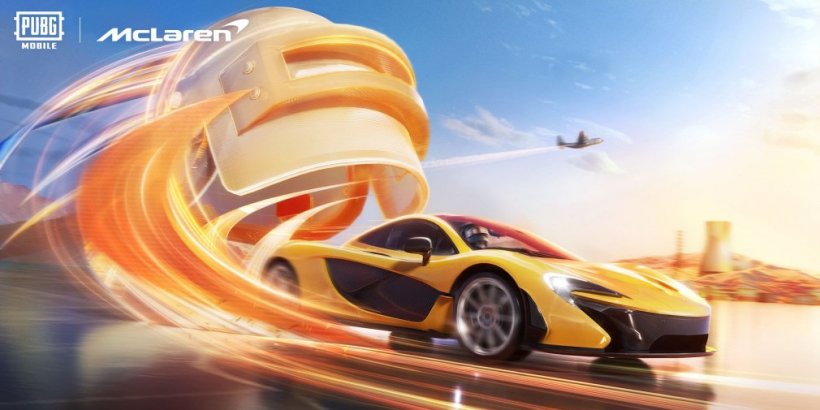
McLaren Returns to PUBG Mobile Collaboration
Aug 27,2024
-
8

Roblox: Trucking Empire Codes (January 2025)
Mar 05,2025
-
9
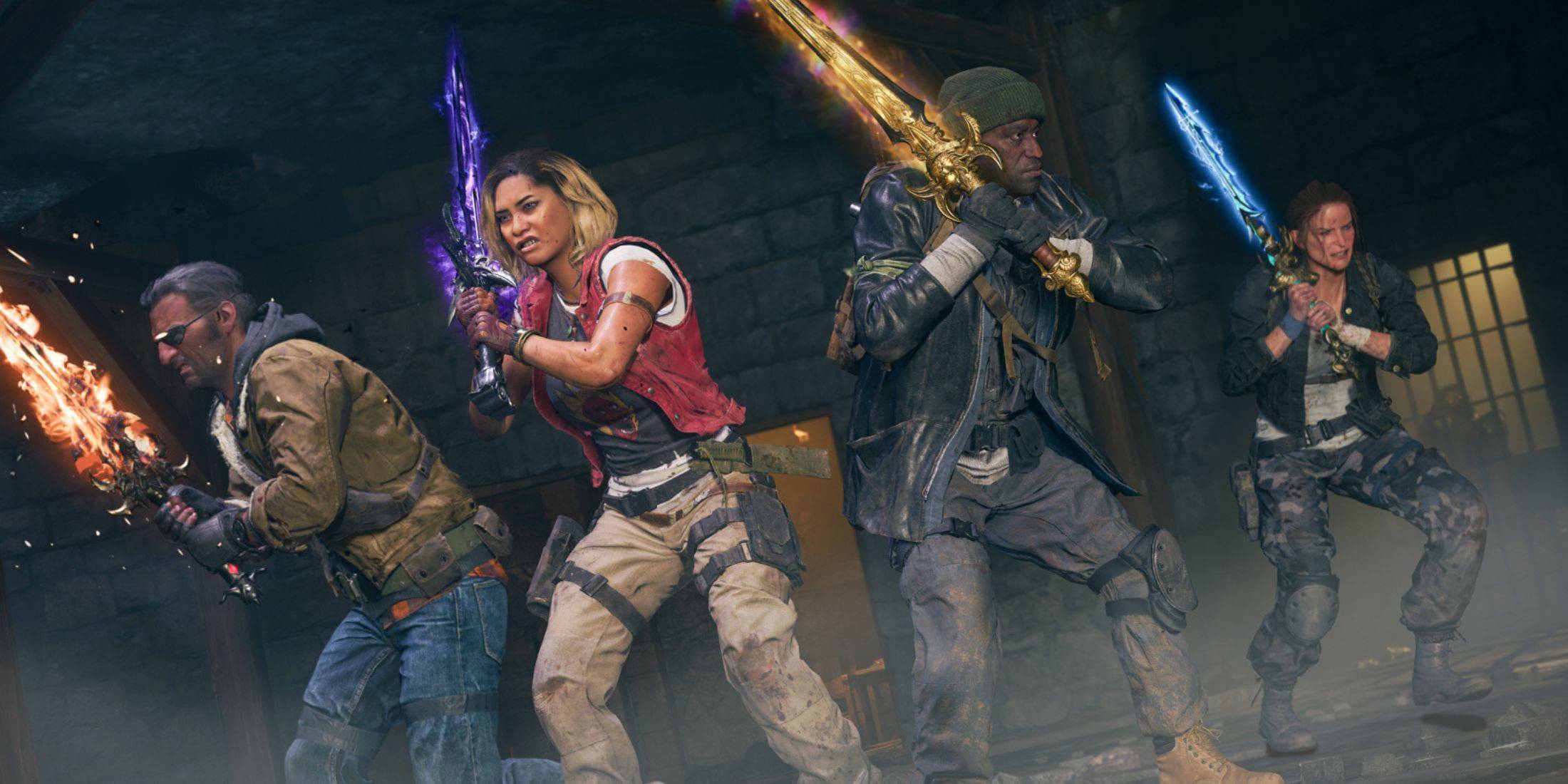
January 15 Is Suddenly a Big Day for Call of Duty: Black Ops 6 Zombies Fans
Feb 20,2025
-
10

Assetto Corsa EVO Release Date and Time
Jan 05,2025
-
Download

DoorDash - Food Delivery
Lifestyle / 59.30M
Update: Apr 23,2025
-
Download

Niramare Quest
Casual / 626.43M
Update: Feb 21,2023
-
Download

The Golden Boy
Casual / 229.00M
Update: Dec 17,2024
-
4
POW
-
5
Gamer Struggles
-
6
Mother's Lesson : Mitsuko
-
7
Poly Pantheon Chapter One V 1.2
-
8
How To Raise A Happy Neet
-
9
Dictator – Rule the World
-
10
Strobe

